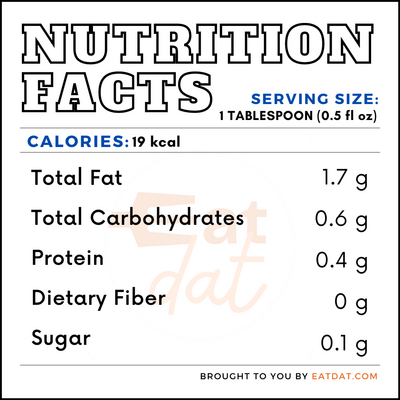
Half and Half
What is Half and Half?
Half and half is the mixture of equal parts of whole milk and heavy cream. This milk is commonly used as a coffee creamer in the US to tone down the intensity of coffee. However, in the UK, this ingredient is known as half cream.
- It is considered a healthier option for people who want to use cream, but also want to cut down on calories.
- In 2019, 176.32m Americans said they used creamer in their coffee.
According to The Kitchn, the top 5 ways to use this milk outside of coffee are:
- Craft a dessert like panna cotta
- Churn up some ice cream
- Make creamier scrambled eggs or frittatas
- Add more flavor and body to pasta sauces
- Whip up a creamy cocktail or beverage
Origin of half and half
This milk was invented on a dairy farm in Florida in the United States in the 1920s. The invention took place on the Boutwell farm which was run by William Boutwell. As a result, Boutwell is credited with inventing the process to make it. Because Boutwell also ran a food store, it was easy for him to produce and distribute his new creamy creation. Today, it is well-known and can be found in nearly every American household.
Function
While most people only consume this with their coffee, this creamy ingredient has plenty of uses. This ingredient is ideal for giving sauces a smoother and creamier texture or making fluffier mashed potatoes. You can also craft a delicious custard or a creamy panna cotta with this ingredient. It even works in creamy drinks like French sodas.
Nutrition
Being half milk and half cream make this ingredient calorie dense. A tablespoon of this ingredient contains:

It even offers significant amounts of vitamin A, calcium, and potassium. However, due to its high-fat content, doctors recommend use of this milk in moderation, much like butter.
Commercial production
The commercial production of this creamy ingredient begins with milk from healthy cows. Because it includes milk and cream, dairy farmers have to prepare both beforehand. Cream is fat skimmed from the top of milk using industrial separators before it is homogenized. Commercial producers must then mix equal parts high-fat cream and lower-fat milk.
To keep the liquid from separating from the fat, the mixture has to be homogenized again using industrial machines. Homogenization keeps the fat from separating, as well as increases the shelf life of this ingredient. The final product is ultra-pasteurized to kill any bacteria present in the mixture and guarantee that it will last longer. After that, it is packaged and sent to an industrial refrigerator to keep cool until sold.
Use
This creamy liquid is no stranger at diner and cafe tables; however, its ubiquity doesn’t mean it never goes bad. To properly enjoy this, you should refrigerate it. Since it’s a dairy product, it’s recommendable to store this drink in a far corner of the fridge where temperatures are consistent. It’s also essential to ensure that the package is tightly sealed when not in use. Finally, always remember to shake it before using it for a more uniform texture.
Recipes
This milk can improve the flavor and texture of many foods. Here are some popular recipes:
FDA regulation
The Food & Drug Administration defines this as food that consists of a mixture of milk and cream. This food must contain between 10.5% and 18% of milk fat. The FDA goes on to describe the labeling and appropriate terms that can be used for this milk product. The labeling of this food is strictly regulated to give consumers vital information and protect against food borne illnesses.
References
“Alfafar Creamery.” Pbchistoryonline.com, Palm Beach County History Online, www.pbchistoryonline.org/uploads/file/Alfar%20Creamery.pdf.
Alfaro, Danilo. “What Is Half-and-Half?” Thespruceeats.com, The Spruce Eats, 23 July 2020, www.thespruceeats.com/what-is-half-and-half-995712.
“The Dairy Dilemma.” Health.harvard.edu, Harvard Health Publishing, 1 Apr. 2020, www.health.harvard.edu/heart-health/the-dairy-dilemma.
“CFR – Code of Federal Regulations Title 21.” Accessdata.fda.gov, U.S. Food & Drug Administration, 1 Apr. 2019, www.accessdata.fda.gov/scripts/cdrh/cfdocs/cfcfr/CFRSearch.cfm?fr=131.180.
